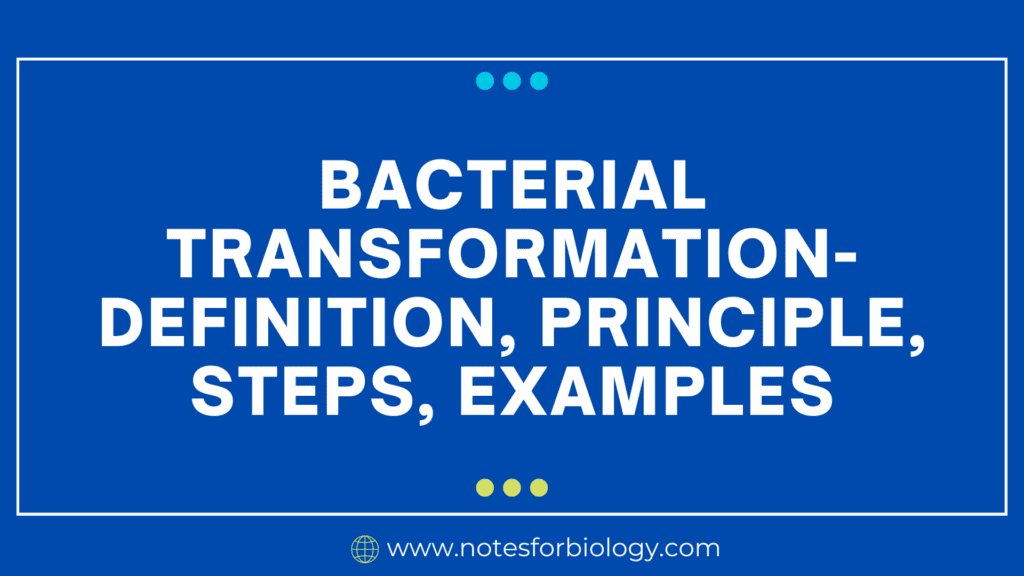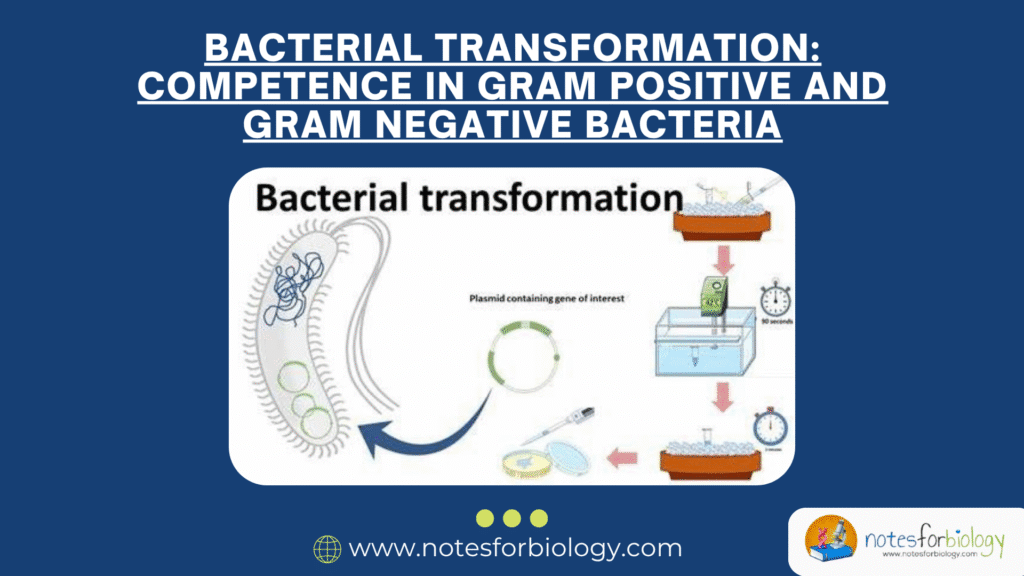Bacterial transformation is a critical process in molecular biology and genetic engineering that involves the uptake and incorporation of foreign DNA into bacteria. This natural phenomenon, initially identified in the early twentieth century, has been extensively used for scientific and biotechnological purposes. Scientists can use transformation to introduce new genetic material into bacterial cells, allowing them to research gene function, produce recombinant proteins, and create genetically engineered species. The ability to change bacterial genomes by transformation has transformed science and industry, providing significant tools for advances in medicine, agriculture, and biotechnology.
Table of Contents
What is Bacterial transformation?
Bacterial transformation is a genetic process in which bacteria absorb free, foreign DNA from their environment and assimilate it into their genetic material. This mechanism can occur naturally in some bacteria or artificially in the lab. Once the foreign DNA is incorporated into the bacterial genome, it can be expressed and duplicated, resulting in new genetic features in the transformed organism. Bacterial transformation is an important approach in molecular biology and genetic engineering because it allows for the study and manipulation of genes for various applications, such as cloning, gene expression research, and recombinant protein manufacturing.
Principle
Bacterial transformation is based on the ability of certain bacteria to collect bare DNA from their surroundings. This DNA could be plasmid DNA or chromosomal DNA fragments. If the foreign DNA is successfully inserted into the bacterial genome, it can be produced and duplicated alongside the bacterial DNA.
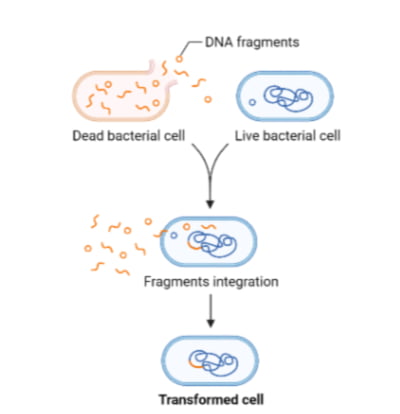
Steps in Bacterial Transformation
Preparation of Competent Cells
Natural Competence: Some bacteria, such as Streptococcus pneumoniae and Bacillus subtilis, are inherently competent and can absorb DNA without additional treatment.
Artificial Competence: For bacteria that are not naturally competent, such as Escherichia coli, artificial approaches are employed. This includes:
1. Chemical Treatment: Calcium chloride (CaCl2) makes cells’ membranes more permeable to DNA.
2. Electroporation: Occurs when cells are subjected to an electric field, causing temporary breaches in the cell membrane through which DNA can enter.
Addition of DNA
Plasmid DNA or linear DNA fragments are combined into competent cells.
Heat shock or electroporation
Heat Shock: In chemically treated cells, the mixture is temporarily heated and then rapidly cooled. This generates a temperature imbalance, allowing DNA to enter the cells.
Electroporation: It is the process of applying an electric pulse to a cell-DNA combination to enhance DNA absorption.
Recovery
The cells are allowed to recuperate in a nutrient-rich medium at a suitable temperature (often 37°C for E. coli) to express any antibiotic-resistance genes carried by the plasmid.
Selection
Transformed cells are placed on agar plates with antibiotics or other selection markers. Only cells that have incorporated and expressed the new DNA will live and thrive.
Screening
Colonies that grow on the selection plates are further screened to ensure the presence and proper integration of the foreign DNA.
Examples
Escherichia coli Transformation Using Plasmids
One frequent example is the transformation of E. coli with the pUC19 plasmid, which has an ampicillin resistance gene as well as several cloning sites for inserting foreign DNA.
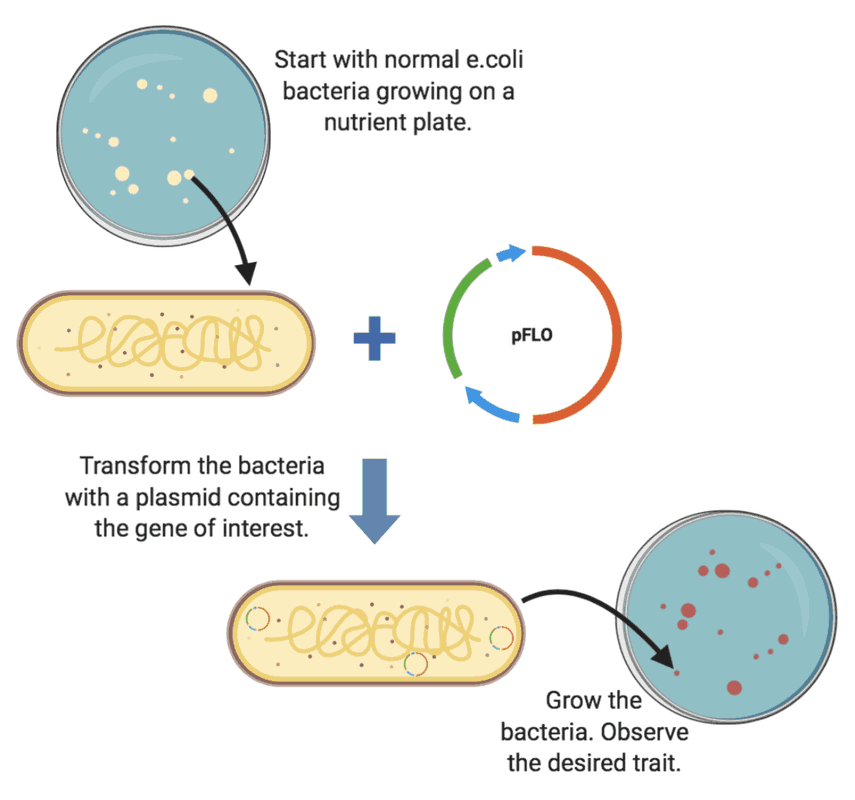
Transformation of Bacillus subtilis
Bacillus subtilis may naturally take up DNA from its surroundings. This feature is used in genetic research as well as industrial applications including enzyme and antibiotic manufacture.
Agrobacterium-mediated transformation in plants
Agrobacterium tumefaciens transfers a portion of its DNA (T-DNA) to plant cells like bacterial transformation. This approach is commonly used to produce genetically engineered plants.
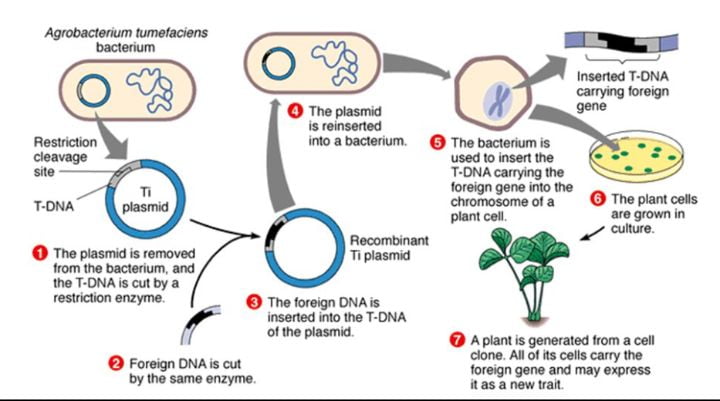
In conclusion, Bacterial transformation is a key molecular biology technique that allows for the manipulation of genetic material in bacteria. This method is required for cloning, gene expression research, and the manufacture of recombinant proteins. Understanding the principles and methods of bacterial transformation is critical for making progress in genetic engineering and biotechnology.
Frequently Asked Questions (FAQ)
What is bacterial transformation?
Bacterial transformation is the process by which bacteria acquire foreign DNA from their environment and incorporate it into their genome.
What are some common steps in a bacterial transformation experiment?
The stages normally entail preparing competent cells, combining them with foreign DNA, administering heat shock or electroporation, allowing the cells to recover, and selecting transformed cells on selective media.
What role does bacterial transformation have in medicine?
Bacterial transformation is utilized to produce insulin, human growth hormone, vaccines, and other medicinal proteins.
Related Articles

